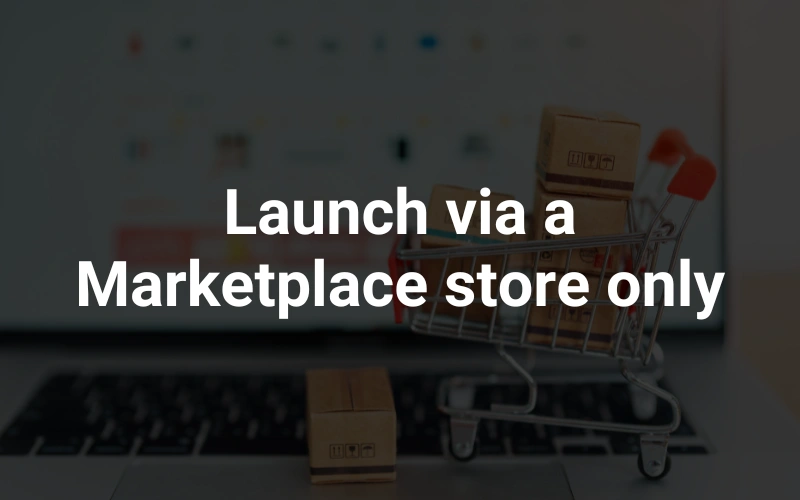
In today’s world, owning a website is equivalent to possessing a business card. Almost everyone possesses one, regardless of actual necessity.



Congratulations, you just contributed a tiny amount to the vast ocean. Around 1,06,086 websites are being registered every day in India. Honestly, in the competitive environment nowadays simply having a website won’t be enough for you to succeed.
This article will provide guidance on the actions to take when launching a B2C product brand.


Fast orders: Your initial order could be received within the first week.
No Need to Worry About Technology: Platforms such as Flipkart and Amazon will handle all the technological challenges for you.
Order Fulfillment: These platforms offer complete assistance in guiding you on packaging and delivering the product.
Quick Start: It takes just 3 days to get your products live on a marketplace.
High Quality Traffic: Were you aware that two-thirds of “buy” intent searches are done in a marketplace rather than on the Google search bar. Every visitor to this website is looking to make a purchase.
Having a brand is unnecessary: Online shoppers are willing to try new things and if it’s from a reliable source (Amazon/Flipkart), they will not hesitate to buy, so lacking a logo is no longer an issue.
Ahhh…. enough said!

Are you clever folks considering the idea of selling on online platforms and having your own website too? Certainly, to some extent!
Ideally, I highly suggest approaching this in a step-by-step manner. Initially, you begin selling on marketplaces to make money, all the while building your own personal brand identity.
If your product is of high quality, customers will purchase it frequently and recommend it to others. This will prompt your audience to begin looking for your product using your brand’s name. If you want to be more aggressive, you have the option of running in-marketplace ads in addition to a small number of social branding ads (focused solely on branding and not sales).
Once you begin receiving regular orders through online marketplaces, it is advisable to shift focus and begin attracting customers to your own website. You will receive significant SEO advantages due to the brand recall (searching for brand keywords) done by your customers.
This is the last rap you perform before becoming famous. All promotional efforts will be solely focused on promoting the website. Potential customers who are unfamiliar with the brand may search for information online and come across your online store, which already boasts positive reviews and high sales numbers. Therefore, leading to earning the trust of that researcher. This increases the likelihood of making a sale.
If I were to provide a rough estimate of the schedule, it would look similar to this. (note: timelines vary depending on different industries, feel free to reach out for a customized timeline for your business niche)

It is essential for new brands wanting to sell online to utilize both a website owned by the brand and marketplace platforms. Begin by listing products on online platforms such as Amazon or Flipkart in order to efficiently drive sales and establish brand awareness. After getting started, start to transition your attention to your own website so you have complete control over customer engagements and increase profits to the maximum extent. This two-pronged approach enables the achievement of immediate visibility and income from online platforms, as well as the cultivation of lasting customer connections and brand devotion via your own site.
Establish trust through providing excellent products, receiving favorable feedback, and staying open with your clients. As customers become familiar with and have confidence in your brand, they will be more inclined to buy products directly from your website.
Make sure you have a trustworthy technical team in position to handle code malfunctions, server problems, and routine backups. Investing in quality technology and support can help prevent numerous potential issues.
Start by engaging in sales on online platforms in order to generate income and establish your brand identity. Over time, redirect your attention to your own website in order to draw in direct customers and increase profits. This strategy combines short-term sales with the creation of a strong brand over time.
Creating a website owned by the brand allows for full authority over reviews, content, promotions, and customer information. You retain all earnings, except for a slight charge for payment gateways, and have the ability to customize your marketing tactics specifically for your target demographic.
©2024. Glamour Fox Productions. All Rights Reserved.